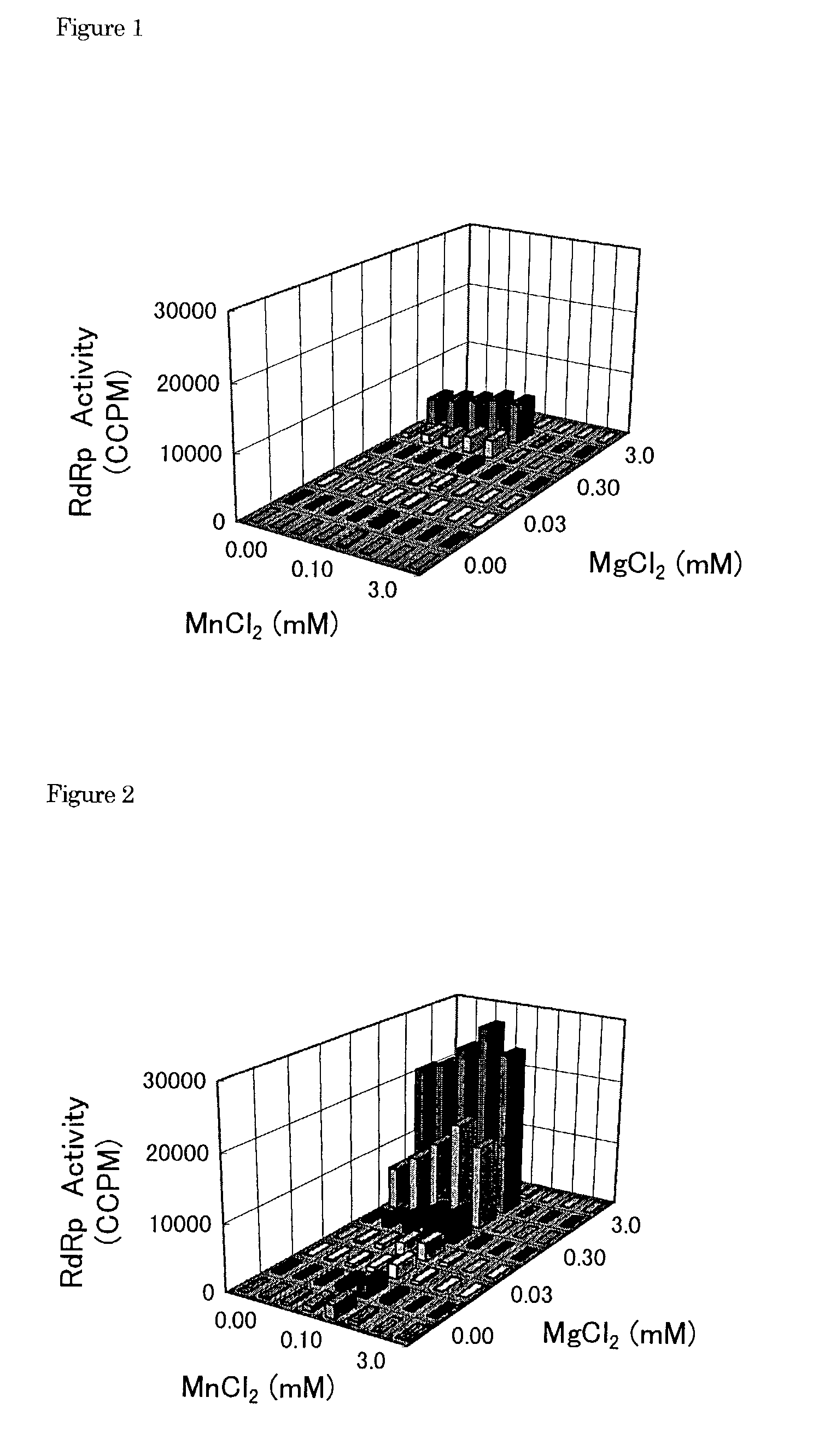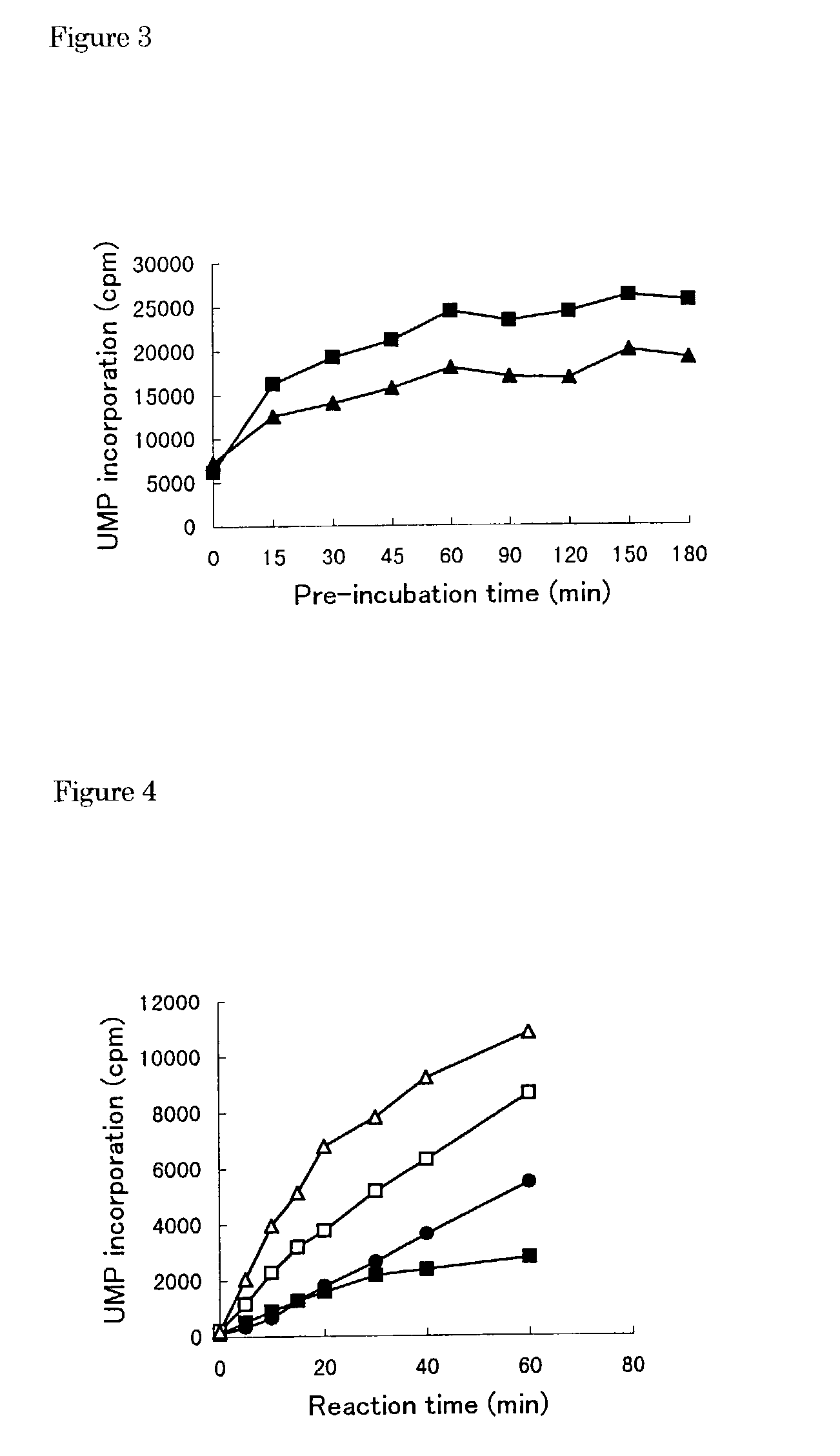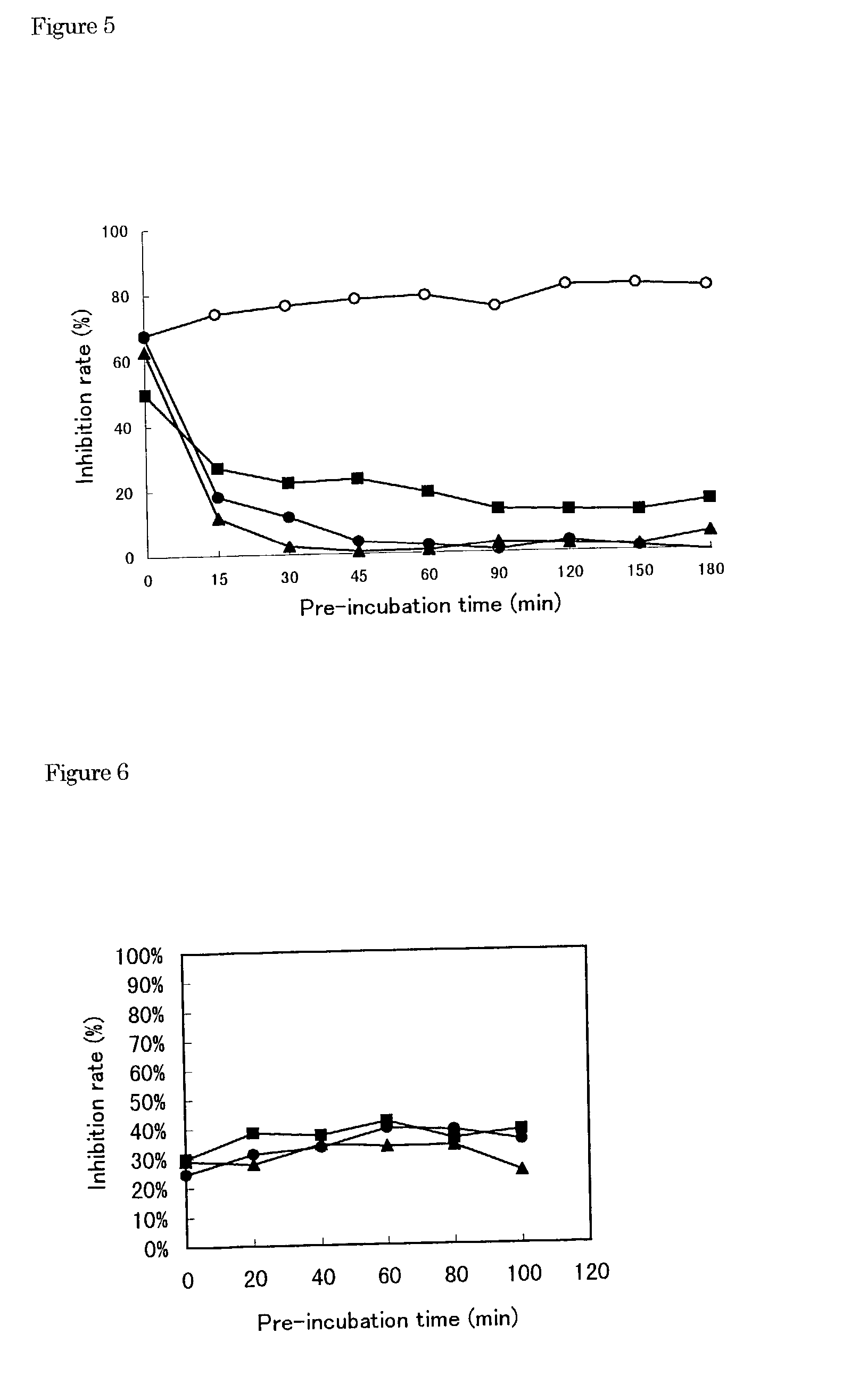Preincubation assay methods
a technology of activator or inhibitor, applied in the field of preincubation assay, can solve the problems of analyzing an enormous number of data, complex process, and inability to meet the first assay requirements, and achieve the effect of increasing the detectability of the assay and enhancing the activity of the enzyme activity
- Summary
- Abstract
- Description
- Claims
- Application Information
AI Technical Summary
Benefits of technology
Problems solved by technology
Method used
Image
Examples
example 1
The Assay Method with Pre-incubation Using HCV RNA-Dependent RNA Polymerase
[0107]1) The buffer I 1) (10.5 μl) containing Tris-HCl (100 mM, pH 7.5), MgCl2 (25 mM), dithiothreitol (5 mM), KCl (125 mM) and ethylenediaminetetraacetic acid (5 mM) was transferred to a polypropylene tube and then poly(A)2) solution (100 μg / ml, 10.5 μl), oligo(U)12 3) solution (1 μg / ml, 10.5 μl) and water (8 μl) were added into the tube and mixed.[0108]2) Next, HCV RNA-dependent RNA polymerase (10.5 μl) was added into the tube and pre-incubated at 25° C. for 60 ml.[0109]3) The enzyme solution pre-incubated (50 μl) was added to a test compound (5.26 μl / well) dissolved with dimethyl sulfoxide or water in a well of a 96-wells microtiter plate.[0110]4) Additionally, the buffer II (10.6 μl) containing Tris-HCl (100 mM, pH 7.5), MgCl2 (25 mM), dithiothreitol (5 mM), KCl (125 mM), ethylenediaminetetraacetic acid (5 mM) and UTP[0111]4) (2.1 μM, 1 μCi 3H-UTP), was mixed with water (39.4 μl). The mixture (50 μl) was ...
example 2
[0154]The assay method with pre-incubation using HCV RNA-dependent RNA polymerase without radioisotope-labeled substrate.
[0155]In Example 1, 3H-UTP, that is UTP labeled with tritium as radioisotope was used as substrate in the assay with pre-incubation using HCV RNA-dependent RNA polymerase. Herein, digoxigenin-labeled UTP (DIG-UTP) instead of 3H-UTP was used as substrate in the assay with pre-incubation using HCV RNA-dependent RNA polymerase.[0156]1) Streptavidin (1 mg / ml) was dissolved in the phosphate buffer saline (PBS) containing NaCl (0.137 M), KCl (2.68 mM), potassium dihydrogenphosphate (1.47 mM) and sodium phosphate (8.06 mM).[0157]2) The streptavidin solution was diluted 25-fold with the carbonate buffer containing sodium carbonate (0.9 M) and sodium hydrogencarbonate (0.1 M).[0158]3) The 25-fold streptavidin solution (50 μl / well) was transferred to a well of 96 wells-microtiter palate with flat bottom for immunoassay and then the plate was kept at 4° C. over night.[0159]4...
PUM
| Property | Measurement | Unit |
|---|---|---|
| temperature | aaaaa | aaaaa |
| temperature | aaaaa | aaaaa |
| temperature | aaaaa | aaaaa |
Abstract
Description
Claims
Application Information
 Login to View More
Login to View More - R&D
- Intellectual Property
- Life Sciences
- Materials
- Tech Scout
- Unparalleled Data Quality
- Higher Quality Content
- 60% Fewer Hallucinations
Browse by: Latest US Patents, China's latest patents, Technical Efficacy Thesaurus, Application Domain, Technology Topic, Popular Technical Reports.
© 2025 PatSnap. All rights reserved.Legal|Privacy policy|Modern Slavery Act Transparency Statement|Sitemap|About US| Contact US: help@patsnap.com



